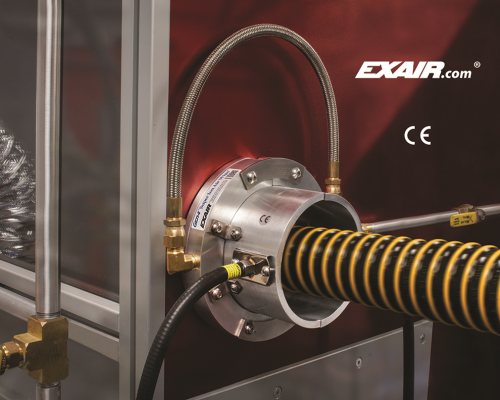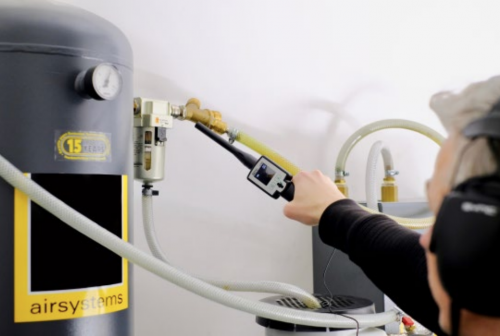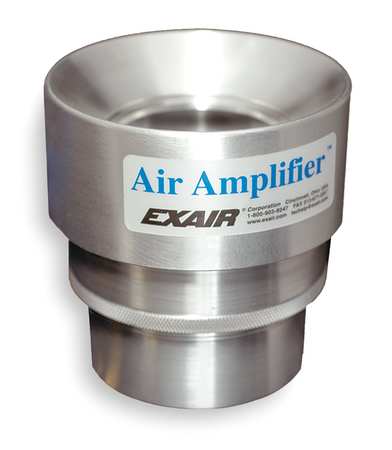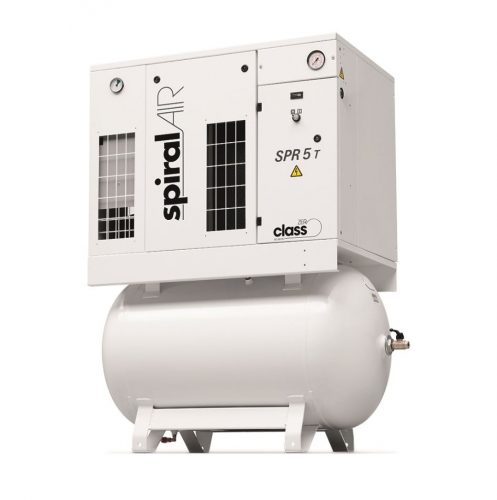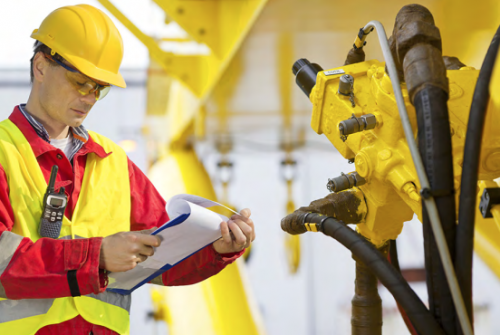As seasons change, different problems are bound to arise within any system. Summer brings the risk of overheating and potential heat damage to sensitive electronics, while spring’s increased humidity can lead to lower quality ambient air as well as general wear and tear. In fall and winter, the most common issue is static buildup due to relative low humidity. Static buildup can cause a wide array of difficulties, such as misreadings from sensors or damage to electronics, both of which can lead to malfunctioning of equipment and significant resource waste. In large-scale industrial settings, static buildup can even pose a risk to workers in high-friction areas if unchecked, as the sheer quantity of materials in movement may result in a potentially hazardous static discharge.
Within industrial systems, there are a few quite effective ways that efficient compressed air can be used to reduce static buildup. From the Ion Air Knife, which is used to cleanse product surfaces of debris and remove static buildup, to the Ionizing Bar, which directs a flow of ions to eliminate static on high-static surfaces like paper, plastic, or films, Airtec offers multiple useful options capable of significantly reducing static in large increments. As important as mass static elimination is, it’s also rather important to remove static where possible throughout the system, rather than only in one place. By spreading the task of static elimination out throughout the system, you can avoid static buildup in only specific areas. For this task, tools like the Super Ion Air Wipe are incredibly handy.
Exair Ion Air Wipes
The Exair Super Ion Air Wipe is designed to eliminate static while offering all the benefits of a blowoff product, such as drying materials and removing debris and particles. Offering a powerful ionized 360-degree airflow, the Super Ion Air Wipe is the perfect static eliminating blowoff tool for materials such as pipe, cable, wire, tubing and moulded or extruded shapes. Everything that passes through the Super Ion Air Wipe receives a blast of air that provides total coverage, maximizing output while minimizing consumption to better enhance efficiency levels. It’s lightweight, easy to mount, shockless, and has no moving parts, virtually removing the need for any maintenance.
But how does it work? The Super Ion Air Wipe is actually a very simple design. Using only a small amount of compressed air, the Air Wipe draws in ambient air and expels it inward at high velocity. The expelled airflow is ionized by 2 replaceable ionizing points, which gives this Air Wipe its static elimination capability.
Improve Product Quality and Increase Efficiency
At Airtec, every product we recommend is proven to increase efficiency levels throughout your system. The Exair Super Ion Air Wipe is no exception. This tool allows you to further your efficiency goals by replacing less efficient and less purpose-built blowoff solutions, saving you money. What’s more, with the uniform ionized airflow, you can be sure that your products and materials will be clear of debris and the static that draws in particulate matter, ultimately increasing your product quality.
If you are interested in learning more about Air Wipes or Static Elimination, please don’t hesitate to contact us. We offer free quotes on all of our solutions to help you build a better, more efficient system.

